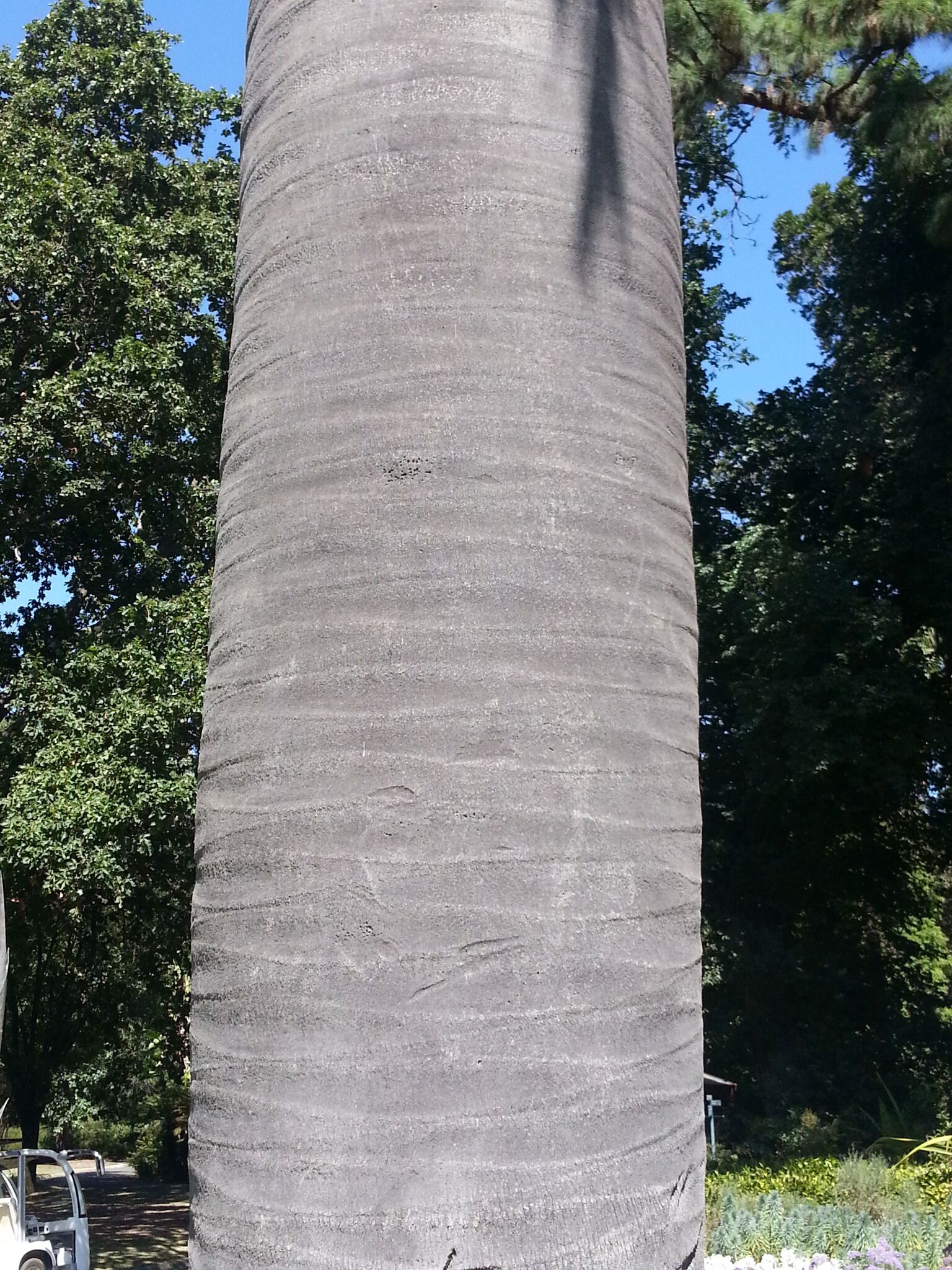
Solitary slow growing palm to 25 m tall with a stout grey trunk to more than 1 m wide, often swollen in the middle and narrowing strongly towards the crown, the leaf scars narrow and diamond-shaped. Crownshaft absent. Leaves feather-shaped, arching in a rounded crown, blue-green, greyish beneath. Leaf stalks without spines. Leaf sheaths fibrous. Leaflets numerous, about 120 per side with an apical lobe or cut. Flowers unisexual, both sexes on the same plant, red-brown. Panicles arising among the leaves with a long stalk and each with 2 large woody boat-shaped bracts prominent in the crown. Fruits ovoid, to 4 cm long, 2.5 cm wide, orange-yellow when mature, the single seed looking like a miniature coconut with 3 pores near the base, ripening March-April when, in Melbourne for example, they lie beneath the trees in a fermenting mass. [J. spectabilis Humb., Bonpl. & Kunth]
Chile
Grows in open woodland and on the sides of gullies. Once abundant in Chile but now rare because trees have been cut down for their sugary sap which is made into palm honey, palm wine or palm sugar. Now being replanted in its natural state for conservation purposes. The fruit have an edible kernel. Grows well in temperate regions in or near coastal districts as well as some way inland. An outstanding palm which deserved to be much more widely planted.
Trunk large, stout, grey, with narrow diamond-shaped scars; no crownshaft; leaves feathery, greyish beneath; fruit fleshy, containing a seed like a miniature coconut.
Vic: Melbourne (Royal Botanic Gardens Victoria (Melbourne Gardens), Western & Princes Lawns); Geelong (Geelong Botanic Gardens, finest in state); Kyneton (Kyneton Botanic Gardens); Parkville (University of Melbourne System Garden (near Biosciences 2)); St Kilda (St Kilda Botanical Gardens); Yarra Glen (Chateau Yering).Tas: Royal Tasmanian Botanical Gardens (Hobart).
Glassman (1987).
Source: (2005). Arecaceae. In: . Horticultural Flora of South-eastern Australia. Volume 5. Flowering plants. Monocotyledons. The identification of garden and cultivated plants. University of New South Wales Press.
